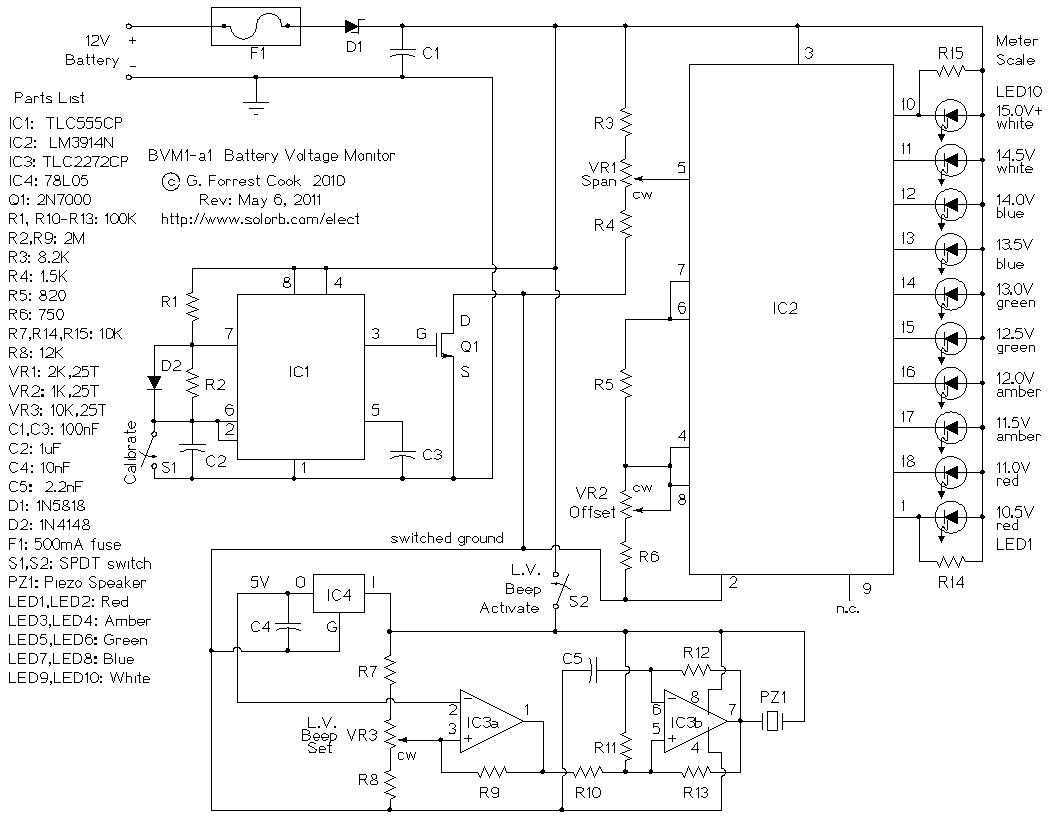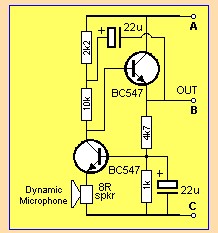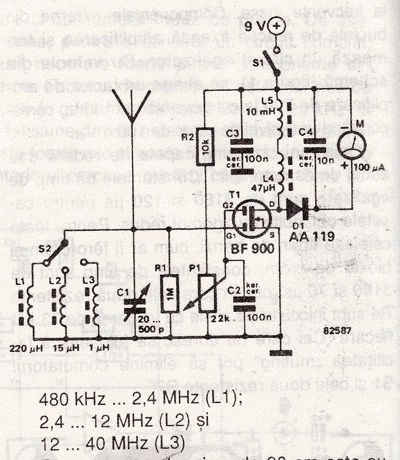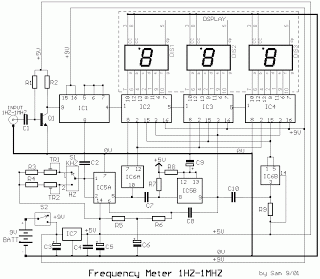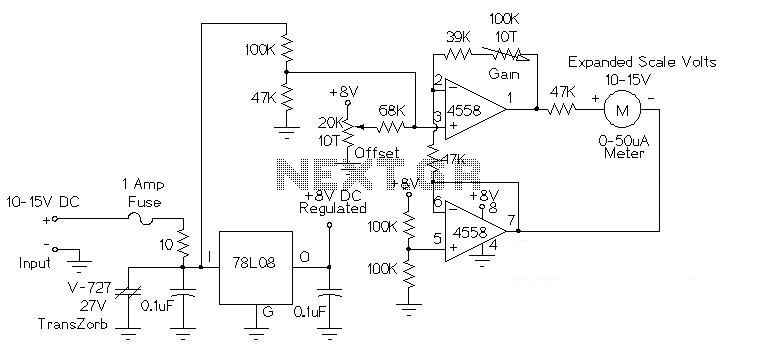
Q METER
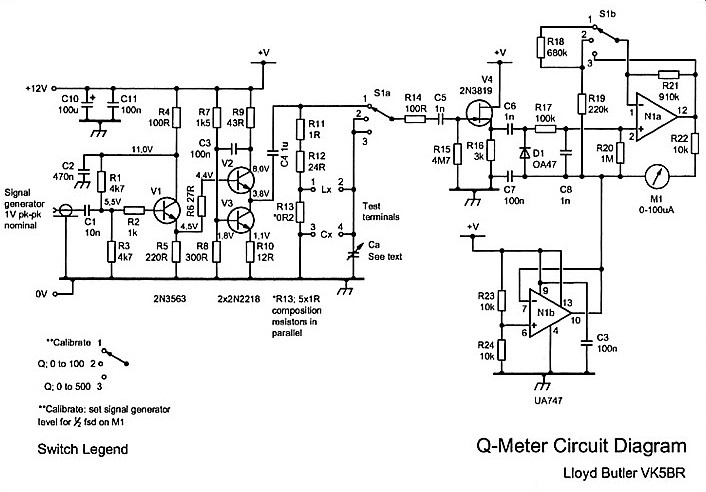
For many years, the Q meter has been an essential piece of equipment for laboratories engaged in the testing of radio frequency circuits. In modern laboratories, the Q meter has been largely replaced by more advanced and expensive impedance measuring devices, making it difficult to find a manufacturer that still produces Q meters. However, for radio amateurs, the Q meter remains a valuable piece of test equipment. A simple Q meter design has been proposed for use in a radio shack. For those unfamiliar with this instrument, introductory notes on the definition and measurement of Q are provided. The Q factor, or quality factor, of an inductance is typically expressed as the ratio of its series reactance to its series resistance. Similarly, the Q factor of a capacitance can be expressed as the ratio of its series reactance to its series resistance, although capacitors are usually specified by the D or dissipation factor, which is the reciprocal of Q. A tuned circuit at resonance is characterized by a Q factor, which is defined as the ratio of either the inductive reactance or the capacitive reactance to the total series loss resistance in the tuned circuit. A higher loss resistance and a lower Q indicate greater power loss during each oscillation cycle, necessitating more power to maintain oscillation. The concept of loaded Q is also relevant, particularly in transmitter tank circuits, where the resistance used to calculate Q includes both the unloaded tuned circuit series resistance and the additional loss resistance from the coupled load. Q can also be expressed as the ratio of equivalent shunt resistance to either the inductive or capacitive reactance, and series loss resistance can be converted to an equivalent shunt resistance using a specific formula. Additionally, the Q factor of a resonant circuit corresponds to its voltage magnification factor, which can be expressed as the ratio of the voltage across its reactive elements to the voltage injected in series with the circuit. Q meters utilize this principle to measure the Q factor. A basic Q meter features terminals for connecting the inductance (Lx) to be measured, which is resonated by a variable tuning capacitor (C). Additional terminals allow for the inclusion of capacitance (Cx) if necessary. The tuned circuit is excited by a tunable signal source that develops voltage across a resistor in series with the tuned circuit. This resistor must have a resistance much smaller than the loss resistance of the components to ensure its value can be disregarded, typically requiring a resistance of only a fraction of an ohm. Metering is provided to measure the AC injection voltage across the series resistor and the AC output voltage across the tuning capacitor terminals. The output measurement circuit must have high input impedance to prevent loading the tuned circuit. The Q factor is determined by adjusting the source frequency and/or the tuning capacitor until a peak in output voltage is observed, indicating resonance. The Q factor is calculated as the ratio of the output voltage across the tuned circuit to the injected voltage. In practice, the signal source level is set to a calibrated point on the meter measuring injected voltage, allowing the Q to be read directly from the calibration on the meter measuring output voltage. The Q meter serves multiple functions; it is primarily used to measure Q and is typically employed to assess the Q factor of inductors. Because the internal tuning capacitor has an air dielectric, its loss resistance is negligible compared to that of any inductor, ensuring that the Q measured reflects that of the inductor.
A Q meter is a specialized instrument designed to measure the quality factor (Q factor) of inductive and capacitive components within radio frequency circuits. The Q factor is a dimensionless parameter that quantifies the efficiency of a resonant circuit, indicating how well energy is stored versus lost. The basic operation of a Q meter involves creating a resonant circuit with the component under test and measuring the voltages across the circuit to compute the Q factor.
The primary components of a Q meter include a variable tuning capacitor, a signal source, a series resistor, and measurement circuitry. The tuning capacitor is used to achieve resonance with the inductive component being tested, while the signal source provides the necessary AC voltage for excitation. The series resistor, which must have a very low resistance, ensures that the losses in the circuit do not significantly affect the measurements.
To initiate a measurement, the operator connects the component to the Q meter and adjusts the tuning capacitor and signal frequency until a peak voltage is observed across the tuned circuit. This peak indicates that resonance has been achieved, allowing for the calculation of the Q factor by taking the ratio of the output voltage to the injected voltage.
The Q meter's design allows for precise measurements, making it an invaluable tool for radio amateurs and engineers involved in RF circuit design and testing. Despite the availability of more advanced impedance measuring devices, the simplicity and effectiveness of a basic Q meter make it a relevant and practical choice for many applications in the field of electronics.For many years, the Q meter has been an essential piece of equipment for laboratories engaged in the testing of radio frequency circuits. In modem laboratories, the Q meter has been largely replaced by more exotic (and more expensive) impedance measuring devices and today, it is difficult to find a manufacturer who still makes a Q meter.
For the r adio amateur, the Q meter is still a very useful piece of test equipment and the writer has given some thought to how a simple Q meter could be made for the radio shack. For those who are unfamiliar with this type of instrument, a few introductory notes on the definition of Q and the measurement of Q, are included.
The Q factor or quality factor of an inductance is commonly expressed as the ratio of its series reactance to its series resistance. We can also express the Q factor of a capacitance as the ratio of its series reactance to its series resistance although capacitors are generally specified by the D or dissipation factor which is the reciprocal of Q.
A tuned circuit, at resonance, is considered to have a Q factor. In this case, Q is equal to the ratio of either the inductive reactance, or the capacitive reactance, to the total series loss resistance in the tuned circuit. The greater the loss resistance and the lower the Q, the greater the power lost on each cycle of oscillation in the tuned circuit and hence the greater the power needed to maintain oscillation.
Sometimes we talk of loaded Q (such as in transmitter tank circuits) and, in this case, resistance for calculation of Q is the unloaded tuned circuit series resistance plus the additional loss resistance reflected in series into the circuit from its coupled load. There are other ways of expressing Q factor. It can be expressed approximately as the ratio of equivalent shunt resistance to either the inductive or the capacitive reactance.
Series loss resistance can be converted to an equivalent shunt resistance using the following formula: Finally, Q factor of a resonant circuit is equal to its voltage magnification factor and Q can also be expressed as the ratio of voltage developed across its reactive elements to the voltage injected in series with the circuit to produce the developed voltage. To measure Q factor, Q meters make use of this principle. A basic Q meter is shown in Figure 1. Terminals are provided to connect the inductance (Lx) to be measured and this is resonated by a variable tuning capacitor (C).
Terminals are also provided to add capacitance (Cx), if required. The tuned circuit is excited from a tunable signal source which develops voltage across a resistor in series with the tuned circuit. The resistor must have a resistance small compared to the loss resistance of the components to be measured so that its value can be ignored.
A resistance of a mere fraction of an ohm is necessary. Metering is provided to measure the AC injection voltage across the series resistor and the AC output voltage across the terminals of the tuning capacitor. The output measurement must be a high input impedance circuit to prevent loading of the tuned circuit by the metering circuit.
Q is measured by adjusting the source frequency and/or the tuning capacitor for a peak in output voltage corresponding to resonance. Q factor is calculated as the ratio of output voltage measured across the tuned circuit to that injected into it.
In practice, the signal source level is generally set for a calibrate point on the meter which measures injected voltage and Q is directly read from calibration on the meter which measures output voltage. The Q meter can be used for many purposes. As the name implies, it can measure Q and is generally used to check the Q factor of inductors. As the internal tuning capacitor has an air dielectric its loss resistance is negligible compared to that of any inductor and hence the Q measured is that of the inductor.
The value of Q varies considerab 🔗 External reference
A Q meter is a specialized instrument designed to measure the quality factor (Q factor) of inductive and capacitive components within radio frequency circuits. The Q factor is a dimensionless parameter that quantifies the efficiency of a resonant circuit, indicating how well energy is stored versus lost. The basic operation of a Q meter involves creating a resonant circuit with the component under test and measuring the voltages across the circuit to compute the Q factor.
The primary components of a Q meter include a variable tuning capacitor, a signal source, a series resistor, and measurement circuitry. The tuning capacitor is used to achieve resonance with the inductive component being tested, while the signal source provides the necessary AC voltage for excitation. The series resistor, which must have a very low resistance, ensures that the losses in the circuit do not significantly affect the measurements.
To initiate a measurement, the operator connects the component to the Q meter and adjusts the tuning capacitor and signal frequency until a peak voltage is observed across the tuned circuit. This peak indicates that resonance has been achieved, allowing for the calculation of the Q factor by taking the ratio of the output voltage to the injected voltage.
The Q meter's design allows for precise measurements, making it an invaluable tool for radio amateurs and engineers involved in RF circuit design and testing. Despite the availability of more advanced impedance measuring devices, the simplicity and effectiveness of a basic Q meter make it a relevant and practical choice for many applications in the field of electronics.For many years, the Q meter has been an essential piece of equipment for laboratories engaged in the testing of radio frequency circuits. In modem laboratories, the Q meter has been largely replaced by more exotic (and more expensive) impedance measuring devices and today, it is difficult to find a manufacturer who still makes a Q meter.
For the r adio amateur, the Q meter is still a very useful piece of test equipment and the writer has given some thought to how a simple Q meter could be made for the radio shack. For those who are unfamiliar with this type of instrument, a few introductory notes on the definition of Q and the measurement of Q, are included.
The Q factor or quality factor of an inductance is commonly expressed as the ratio of its series reactance to its series resistance. We can also express the Q factor of a capacitance as the ratio of its series reactance to its series resistance although capacitors are generally specified by the D or dissipation factor which is the reciprocal of Q.
A tuned circuit, at resonance, is considered to have a Q factor. In this case, Q is equal to the ratio of either the inductive reactance, or the capacitive reactance, to the total series loss resistance in the tuned circuit. The greater the loss resistance and the lower the Q, the greater the power lost on each cycle of oscillation in the tuned circuit and hence the greater the power needed to maintain oscillation.
Sometimes we talk of loaded Q (such as in transmitter tank circuits) and, in this case, resistance for calculation of Q is the unloaded tuned circuit series resistance plus the additional loss resistance reflected in series into the circuit from its coupled load. There are other ways of expressing Q factor. It can be expressed approximately as the ratio of equivalent shunt resistance to either the inductive or the capacitive reactance.
Series loss resistance can be converted to an equivalent shunt resistance using the following formula: Finally, Q factor of a resonant circuit is equal to its voltage magnification factor and Q can also be expressed as the ratio of voltage developed across its reactive elements to the voltage injected in series with the circuit to produce the developed voltage. To measure Q factor, Q meters make use of this principle. A basic Q meter is shown in Figure 1. Terminals are provided to connect the inductance (Lx) to be measured and this is resonated by a variable tuning capacitor (C).
Terminals are also provided to add capacitance (Cx), if required. The tuned circuit is excited from a tunable signal source which develops voltage across a resistor in series with the tuned circuit. The resistor must have a resistance small compared to the loss resistance of the components to be measured so that its value can be ignored.
A resistance of a mere fraction of an ohm is necessary. Metering is provided to measure the AC injection voltage across the series resistor and the AC output voltage across the terminals of the tuning capacitor. The output measurement must be a high input impedance circuit to prevent loading of the tuned circuit by the metering circuit.
Q is measured by adjusting the source frequency and/or the tuning capacitor for a peak in output voltage corresponding to resonance. Q factor is calculated as the ratio of output voltage measured across the tuned circuit to that injected into it.
In practice, the signal source level is generally set for a calibrate point on the meter which measures injected voltage and Q is directly read from calibration on the meter which measures output voltage. The Q meter can be used for many purposes. As the name implies, it can measure Q and is generally used to check the Q factor of inductors. As the internal tuning capacitor has an air dielectric its loss resistance is negligible compared to that of any inductor and hence the Q measured is that of the inductor.
The value of Q varies considerab 🔗 External reference

